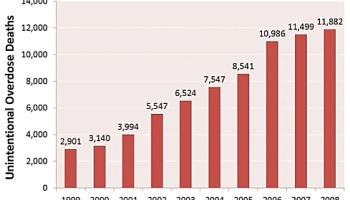Reading Time: 3 minutes
Heroin and pain medications in particular, continue to top the list as the fastest rising addictions in the United States. As with prescription pain-relief medications, just because a medication comes in prescription form doesn’t mean it’s safe to take whenever the mood strikes. For opiate-based drugs – both heroin and prescription pain-killers – a high potential for addiction exists no matter the type of drug. Opiate addiction statistics paint a clear and somewhat surprising picture of the effects these drugs can have when misused as well as when used as prescribed.
Fortunately, opiate addiction statistics have drawn the attention of local governments to the point where 36 states currently have Prescription Drug Monitoring Programs. These programs are designed to track the prescription and dispensing practices for prescription drugs from doctors to pharmacies to patients. While these programs do help to contain opiate misuse, opiate addiction statistic rates continue to grow at alarming rates.
Here are 10 opiate addiction statistics in the making:

This graph shows the increase in opioid-related accidental overdose deaths in the US from 1999 – 2008.
- Prescribed medications, and not rampant thefts from pharmacies, account for nearly all overdose incidents caused by prescription pain medications. Opiate addiction statistics show as many as three out of four people abusing prescription drugs obtained them from a friend or family member.
- An estimated 80 percent of prescription painkillers are prescribed by 20 percent of prescribers. The majority of scripts come from primary care and internal medicine physicians. Very few pain prescriptions originate from physician specialists.
- Medicaid enrollees receive pain prescriptions at twice the rate of non-Medicaid patients. Results from a Washington state study show Medicaid enrollees accounted for 45 percent of overdose fatalities in the state.
- While drug overdose rates vary from state to state, the highest rate of overdose fatality incidents occurred in New Mexico and West Virginia in 2008. Opiate addiction statistics rates in these two states were five times more than in Nebraska, the state with the lowest rate.
- Data collected by the National Institute on Drug Abuse show as many as 4.2 million Americans reported using heroin at least once in their lives. Of this number, an estimated 23 percent become addicted to the drug.
- Between the years 1999 and 2010, sales of prescription painkillers to hospitals, doctors and pharmacies increased fourfold. By 2010, the number of pain medications prescribed was enough to keep every single American medicated for one month’s time.
- Since 1999, the number of overdose deaths from pain medications has increased by 300 percent. In 2008, opiate addiction statistics deaths resulting from prescription pain meds totaled 14,800. This number amounts to over and above the combined total for heroin and cocaine-related deaths.
- In 2009, the abuse of prescription painkiller drugs accounted for more than 475,000 emergency room visits. This number represents a twofold increase in drug-related emergency room visits since 2005.
- As of 2010, opiate addiction statistics show over 12 million Americans reported using prescription pain medications for non-medical purposes without having obtained an actual prescription.
- In 2010, an estimated two million people reported abusing prescription pain medication for the first time within the previous 12 month period. This number amounts to 5,500 people a day abusing prescription pain meds for the first time.
